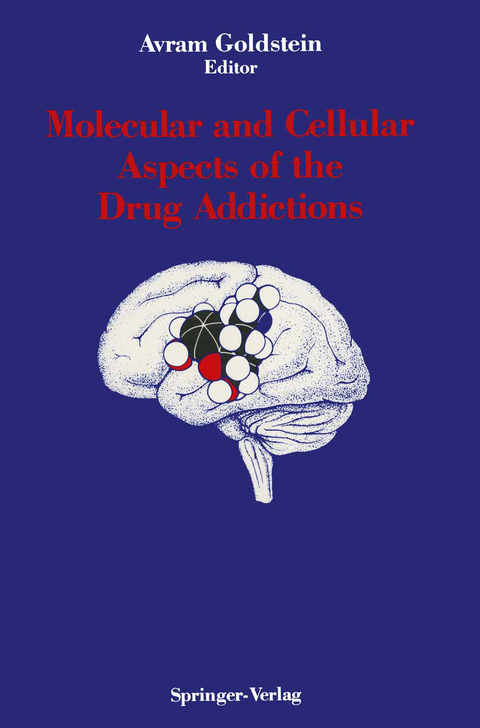
Molecular and Cellular Aspects of the Drug Addictions
Seiten
2011
|
Softcover reprint of the original 1st ed. 1989
Springer-Verlag New York Inc.
978-1-4613-8819-7 (ISBN)
Springer-Verlag New York Inc.
978-1-4613-8819-7 (ISBN)
In 1970 I gave up the chairmanship of the Department of Pharmacology at Stanford University Schoel of Medicine to devote full time to basic and clinical research on problems of drug addiction. In 1971 I developed the method of radioligand binding that led to the important characterization of opioid receptors in several laboratories. The extraordinary specificity of these receptors for morphine and related opiates suggested the likelihood that there were naturally occurring morphine-like molecules in the brain and other tissues. The systematic search for these molecules culminated in 1979 in the discovery, by my group, ofthe dynorphin peptides-one of the three families of opioid peptides, the first of which (the enkephalin family) had been discovered in Aberdeen, Scotland, in 1975. I also became involved in clinical research on the pharmacologic treatment of heroin addicts, for which I established the first large methadone mainte nance treatment program in California. My basic and clinical research experience convinced me that an institution encompassing laboratory research, studies on normal human volunteers, and treatment research, under a single roof, could expedite progress in understanding the drug addictions. That concept was transformed into reality by the founding, in 1974, of the Addiction Research Foundation of Palo Alto, California. The funds for construction of a laboratory were provided by a generous grant from the Drug Abuse Council (a consortium of several foundations), the president of which was Thomas L. Bryant.
1. The Nature of Addiction: An Analysis of the Problem.- 2. Neuroanatomical and Neurochemical Substrates of Drug-Seeking Behavior: Overview and Future Directions.- 3. Bradykinin and Pain.- 4. Neurochemical Aspects of Addiction: Opioids and Other Drugs of Abuse.- 5. Which Molecular and Cellular Actions of Ethanol Mediate Reinforcement?.- 6. Presynaptic Inhibition, Presynaptic Facilitation, and the Molecular Logic of Second-Messenger Systems.- 7. Applications of Molecular Genetics to Neuropsychiatric Disorders.
| Zusatzinfo | XVIII, 238 p. |
|---|---|
| Verlagsort | New York, NY |
| Sprache | englisch |
| Maße | 155 x 235 mm |
| Themenwelt | Medizin / Pharmazie ► Medizinische Fachgebiete ► Neurologie |
| Medizin / Pharmazie ► Medizinische Fachgebiete ► Pharmakologie / Pharmakotherapie | |
| Medizin / Pharmazie ► Medizinische Fachgebiete ► Psychiatrie / Psychotherapie | |
| Medizin / Pharmazie ► Medizinische Fachgebiete ► Schmerztherapie | |
| Medizin / Pharmazie ► Pflege | |
| Medizin / Pharmazie ► Pharmazie | |
| Naturwissenschaften ► Biologie ► Humanbiologie | |
| Naturwissenschaften ► Biologie ► Zoologie | |
| ISBN-10 | 1-4613-8819-8 / 1461388198 |
| ISBN-13 | 978-1-4613-8819-7 / 9781461388197 |
| Zustand | Neuware |
| Informationen gemäß Produktsicherheitsverordnung (GPSR) | |
| Haben Sie eine Frage zum Produkt? |
Mehr entdecken
aus dem Bereich
aus dem Bereich
interdisziplinäre Diagnose- und Behandlungsstrategien
Buch | Hardcover (2024)
Urban & Fischer in Elsevier (Verlag)
CHF 135,75
Buch | Hardcover (2024)
Springer (Verlag)
CHF 195,95


